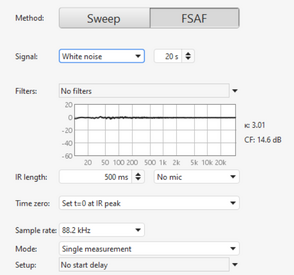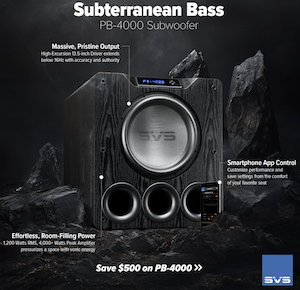John Mulcahy
REW Author
Thread Starter
- Joined
- Apr 3, 2017
- Posts
- 8,477
There are several differences.I took FSAF, acoustic, and regular sweep measurements. Distortion levels differ by a factor of 10.
- The stimulus is not the same
- Sweeps have low crest factor (the peak is only 3 dB above the rms level) so for a given rms level the signal peaks are much lower than for noise or music signals. As distortion is level-dependent that means lower distortion for a given rms signal level
- Sweeps measures harmonic distortion and THD, FSAF measures TD+N and so includes both harmonic distortion and intermodulation













